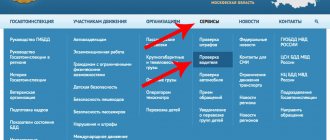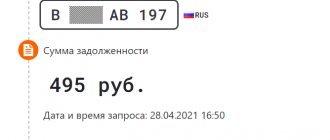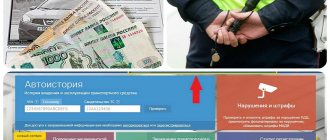What is the first step in drawing up a decision on a case or a protocol?
Despite the similarity of the documents, they are very different from each other. In particular, the difference in terms of compilation. To figure out which document is drawn up first, you need to familiarize yourself with what is hidden under the definitions.
Attention! If you have any questions, you can chat for free with a lawyer at the bottom of the screen or call Moscow; Saint Petersburg; Free call for all of Russia.
The traffic police protocol is a procedural document. Authorized officials are required to formalize it if there is an administrative offense and if any event occurs. The paper is drawn up if a traffic police inspector notices a violation of traffic rules in the actions of drivers. It must be borne in mind that drawing up a protocol does not yet confirm that the driver’s guilt has been proven.
In the process of drawing up a document, a traffic police officer may commit a gross violation. This will result in termination of further consideration of the case. The protocol acts as a starting point for the start of the proceedings. That is why it is issued first.
The traffic police decision is the result of consideration of the circumstances of the case. The specifics of its design directly depend on the seriousness of the incident. If the offense is minor, a verdict may be reached on the spot. If a gross violation of traffic rules is committed, a decision is made by the court. The paper is always drawn up after the fact of an offense has been documented.
Difference of concepts
The difference between a resolution and a traffic police protocol lies in the purpose of the papers and the legal consequences that their execution has for the driver. If the inspector has drawn up a protocol on the violation, there is no need to pay a fine. The driver's guilt has not yet been proven.
During the paperwork process, a person has the right to express his opinion. If he does not agree with certain factors, he can report this to the inspector who issued the paper. If serious errors were made when drawing up a traffic police report, it will be declared invalid. This will allow the driver to avoid liability for offenses committed.
The resolution is drawn up when the consideration of the case is completed. It sets out the punishment to which the offender is subjected. The driver has the right to appeal the decision in court. If this does not happen, the person is obliged to comply with the instructions contained in the paper.
How is it different from a resolution?
The traffic police protocol differs from the resolution, and the difference is cardinal, although they both relate to the fact that the driver violated traffic rules.
If the protocol, as we said above, initiates a case of violation, then the resolution actually ends the consideration of this case. That is, a resolution is a kind of verdict and outcome of the procedure for clarifying the circumstances and determining the driver’s guilt with the imposition of a fine (or other type of punishment) as the result of this case.
In principle, many of the rules listed below apply to both the protocol and the resolution. After all, the latter also has a column for the comments of the person involved, where you need to write the necessary information (see below), if he does not agree with the violation of traffic rules, it also needs to be signed, and refusal to sign can result in similar consequences.
Only the samples of the traffic police protocol and resolution are different.
Resolution or protocol on an administrative offense
If a minor offense has been committed, a verdict in the case may be reached on the spot. However, the driver has the right to demand that the inspector only document what happened by drawing up a report, and make a verdict in court.
Experts advise insisting on your own if there are controversial issues in the case. Proceedings in court will help you defend your case. A citizen cannot refuse to record a committed offense. The decision on the need for paperwork is made by the traffic police officer.
Is it possible to appeal the protocol?
No. There is logically nothing to appeal against in the protocol, since the protocol only initiates the case. That is, a protocol is a document indicating all the circumstances of the case for their subsequent consideration (perhaps even by another inspector or judge, prosecutor, etc.), and the case is conducted on the basis of a resolution. And there's nothing to complain about.
Only the decision is appealed.
You will also be interested in:
- Is it possible to refuse to sign the protocol and resolution and what will be the penalty for this?
- How to appeal (challenge) a traffic police fine?
- Suspension from driving a vehicle in questions and answers
Deadline for issuing a decision
The protocol is the main evidence of the driver’s guilt. It is issued at the scene of the incident. There are exceptions to the rule. If there are controversial issues or details need to be clarified, the period for processing the document can be extended to two days. This is not considered a violation.
The resolution is drawn up after the proceedings on the administrative offense have been completed. If we are talking about a fine, the verdict is rendered within 2 months. In the case of a serious offence, the period may be extended to 3 months. If a decision is not made within this period, the case is closed.
The verdict in the case comes into force within 10 days from the date of its adoption. According to current legislation, the document is valid for 2 months. During this period, you must pay a fine to the traffic police. If a citizen has not complied with the order, enforcement proceedings may be initiated against him.
When is a traffic police resolution drawn up without a protocol?
In practice, there are several cases in which a traffic police decision on a case can be issued without a protocol. This is possible in the following situations:
- The offense was recorded on photo or video cameras. Information about the need to pay a fine is sent by mail.
- If a citizen agrees with the violation that the traffic police inspector imposed on him.
- If an administrative penalty was imposed in the form of a warning or a fine at the scene of the offense. Only an authorized person has the right to perform such an action.
- The citizen does not dispute the existence of an offense.
A complete list of situations for drawing up a traffic police resolution without a protocol is enshrined in Article No. 28.6 of the Code of Administrative Offenses of the Russian Federation. A copy of the documented decision is provided against signature to the person in respect of whom it was made. If the person refuses to receive it, the paper is sent by mail. The action is carried out within 3 days from the date of the decision on the case.
Sample protocol and sample resolution
In order for a protocol on an administrative offense to be recognized as valid, it must contain the information established by current legislation. The list of data that must be entered in the document is recorded in Federal Law No. 195. The list of mandatory information that must be present on the paper includes:
- date and place of registration;
- position and full name of the traffic police officer;
- information about the citizen who violated the established rules;
- date of commission of the offense and place of incident;
- norms and rights that require accountability for an action committed;
- other facts that will be useful during the proceedings.
The traffic police resolution must also comply with established standards. It reflects the following data:
- date and place of consideration of the case;
- information about the person who made the final verdict in the case;
- information about the citizen in respect of whom the document was issued;
- circumstances that were established as a result of the consideration of the case;
- reasoned decision on the proceedings;
- signatures of the participants in the proceedings.
The absence of mandatory information may result in the decision on violation of traffic rules being invalidated.
What is a protocol?
A protocol is a procedural document drawn up at the scene of an administrative offense by a traffic police inspector. Most often, it is completed within 1-2 hours, but in some cases the preparation can take up to two days, and this will not be considered a violation.
Extended deadlines for drawing up the protocol are also provided - at the end of the administrative investigation, when it is necessary to clarify all the circumstances of the incident.
The protocol does not indicate the guilt of the violator; in it, he is not found guilty by law and cannot be held responsible. This document is required for an objective consideration of the case and the issuance of a decision on the basis of which a fine is imposed.
A protocol at the scene of the incident must be drawn up in any case, regardless of whether the citizen agrees with the violation or not. If he denies his guilt and does not want to sign, a corresponding note is placed on the document. The presence of witnesses at the time of registration is mandatory.
Let's consider a practical example when a protocol is drawn up:
The driver parked the car in the zone of a pedestrian crossing, which is a violation and is punishable by fines under the Code of Administrative Offenses of the Russian Federation. A traffic police inspector noticed an improperly parked vehicle and drew up a report in the presence of the owner.
The latter had no objections and agreed with guilt. At the end of the administrative investigation, a violation order was sent to the home address with a requirement to pay a fine.
Contents of the protocol
The form of the protocol was approved by Order of the Ministry of Internal Affairs of Russia dated August 23, 2017 No. 664, but it is recommended and not mandatory.
The document must contain the following information:
- date, time and place of compilation;
- title, position, full name inspector;
- Full name, actual address of residence, place of work, driver’s license number of the offender;
- information about the car: make, license plate, owner details, registration date;
- date, time and place of the violation;
- a link to the article under which the violator will be prosecuted;
- information about the witnesses in whose presence the protocol was drawn up;
- information about victims (if any);
- place and time of consideration of the case;
- signature of the culprit confirming familiarization and explanation of the measures taken;
- signature of the traffic police inspector.
The protocol is drawn up in two copies: one remains in the hands of the culprit, the second is attached to the case materials and given to the inspector. If victims are found as a result of the violation, a third copy is compiled and handed over to him.
Dear reader! Didn't receive an answer to your question? Our expert lawyers work for you. It's absolutely free!
- Moscow ext 152
- St. Petersburg ext 152
- All regions ext 132 (Toll free)
Time between documents
The resolution is drawn up after the protocol. The period for taking action directly depends on the duration of the proceedings. Usually the effect takes place within 2-3 months. The exact period depends on the seriousness of the offense. So, if a citizen is issued a fine, it must be paid within 2 months.
If they want to confiscate a driver’s driving license or apply another, more severe punishment, the duration of the proceedings can be 3 months. If the final verdict has not been rendered, the proceedings are terminated. In this situation, a citizen can avoid punishment.
Protocol and resolution in one day
Cases when the traffic police protocol and resolution are drawn up on the same day are known in practice. This does not contradict current legislation. The approval is valid only if the decision is made by persons with appropriate authority in compliance with all existing procedural requirements.
However, such decisions can be appealed. A citizen has the right to appeal to a higher authority. The detailed rule is enshrined in Article No. 30.1 of the Code of Administrative Offenses of the Russian Federation. A complaint may be filed within 10 days. If an administrative investigation is required, the period is extended.
What is a resolution?
A resolution is a document containing a decision by an authorized officer or court on what punishment will follow for violating traffic rules. The resolution contains information about the amount of the fine or other penalty that will be applied to the perpetrator. A resolution can be drawn up by a traffic police officer only if the inspector can make a decision on the violation and the driver fully agrees with it.
Otherwise, the decision must be made by the court. In this case, the violator will receive a ruling only if the court sides with the traffic police officer and confirms the fact of the violation. However, even in this case, the court's decision can be challenged.
What does the resolution include?
- Information about the place and time of drawing up the resolution;
- Information about who issued the resolution;
- Information about the offender and the vehicle;
- Description of the time, place and violation itself;
- The resolution itself (namely, the amount of the fine and why it was imposed);
- Additional information that is the same in each protocol.
What does the resolution include?
Resolution to cancel the protocol
The protocol drawn up by the traffic police officer may be cancelled. To carry out an action, the grounds enshrined in the Code of Administrative Offenses of the Russian Federation must be present. The court will agree to grant the request for cancellation in the following situations:
- required information is missing;
- during the preparation, violations of the norms of the Code of Administrative Offenses of the Russian Federation were committed;
- the official did not explain to the participants in the incident their rights and obligations;
- the statute of limitations for considering an administrative offense case has expired;
- other violations of the provisions of the current legislation were identified.
A resolution is drawn up to cancel. A similar rule is enshrined in paragraph 1 of Article No. 28.9 of the Code of Administrative Offenses of the Russian Federation.
If the resolution does not specify a protocol
The list of information that must be present in the traffic police resolution is enshrined in article No. 29.10 of the Code of Administrative Offenses of the Russian Federation. According to the regulatory legal act, the document must necessarily reflect:
- information about the persons who made the decision in the case;
- place of consideration of the case and date of the procedure;
- information about the citizen against whom the punishment is applied;
- circumstances that were discovered during the consideration of the case
- a regulatory legal act that provides for liability for the offense committed;
- final verdict on the case;
- deadline and procedure for appealing a fine.
The set of additional information in the traffic police resolution depends on the individual nuances of the current situation. If the data is not required to reflect the resolution in accordance with Article No. 29.10 of the Code of Administrative Offenses of the Russian Federation, they do not need to be recorded in the document.
What does the resolution indicate?
Article 29.10 stipulates that the resolution must always indicate the following information:
- Full name and position of the inspector, full name of the judge or name of another body that issued the decision;
- date and place where and when the situation was considered;
- information about the person against whom the case was considered;
- the circumstances that have been established;
- articles providing for administrative liability for an offense;
- the decision taken in the case;
- deadline and procedure for appealing.
A copy of the resolution and all attached materials obtained using technical means that operate automatically and have photo and video recording. All this is sent to the offender most often on paper.
You need to look at the date of the decision. The period during which the offender has the right to appeal the punishment depends on the date. There is a ten-day period for appeal. The deadline for paying the fine in accordance with the Code of Administrative Offenses is also calculated from the date of the decision.
We issued a protocol and a resolution, what should we do?
If the driver violated the traffic rules, and this fact was documented in accordance with the established rules, you must carefully read the decision made. If you agree with the verdict, the person must pay the fine or comply with other instructions contained in the document.
If a person does not agree with the decision made, he can appeal the traffic police fine. To do this, you need to contact a higher judicial authority. You must appeal the decision with reasons. The citizen must provide evidence of his innocence. If they are absent, the likelihood of the punishment being canceled is minimal.
If a citizen plans to appeal the inspector’s decision, the established deadlines must be observed. You must contact a higher judicial authority within 10 days from the date of receipt of the document. If the deadline is missed without a valid reason, you will not be able to appeal the decision.
Having decided to comply with the order, the driver is obliged to comply with the established deadlines. The fine must be repaid within 2 months from the date the document enters into force. If the period is violated, bailiffs will be involved in the case. They will enforce the collection of the traffic police fine.
Protocol and resolution: table of differences
At its core, there are a lot of differences between a resolution and a protocol:
| Protocol | Resolution |
| Compiled at the scene of discovery of the offense | Issued based on the results of an administrative investigation. Can be drawn up on the spot in individual cases, if the culprit does not deny wrongdoing |
| Does not indicate the guilt of a specific citizen | Specifies information about the culprit |
| Does not oblige a citizen to pay a fine or carry out other administrative penalties | Obliges the driver to pay a fine or take other measures established by the court or the traffic police |
| It is completed quickly - immediately after a violation is detected, or within two days from this moment, if clarification of the circumstances is required | Published in 2-3 months based on the results of the investigation |
An appeal of both documents is allowed pre-trial by submitting a written application for cancellation addressed to the head of the traffic police. If the answer is negative, only the court has the right to resolve the controversial situation.
How to find a resolution according to the protocol?
Today it will not be possible to find information about the resolution if only the protocol is known. All existing online systems allow you to search for data only on the first document. However, a citizen will still be able to find out the information of interest. To do this, you need to use the traffic police service, which allows you to look for fines. To carry out the manipulation, you will need to perform the following steps:
- Visit the official website of the traffic police.
- Open the service, and then click on the item “check traffic police fines”. A window will open in front of the citizen that needs to be filled out. It is necessary to enter information about the car number and information about its registration. The data can be found by examining the vehicle's title.
- Click on the “request verification” button. If all actions are performed correctly, the system will display a table showing information about unpaid fines. One of the columns contains information about the resolution number.
Additionally, a citizen will be able to find out in accordance with what provision of the law he is being punished, as well as find out the amount of the penalty.










